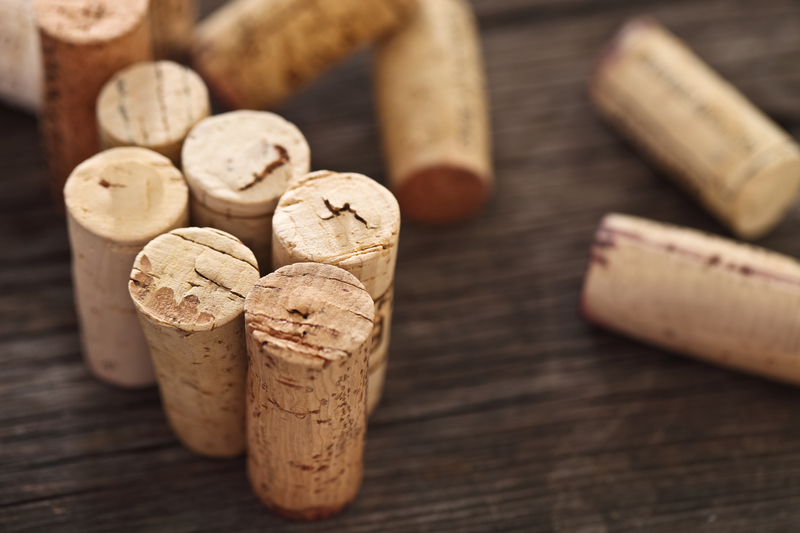Revolutionizing Packaging with Cardboard Waste Solutions
The packaging industry is undergoing a significant transformation--and at the heart of this shift lies an unexpected hero: cardboard waste solutions. As businesses and consumers alike search for greener, more sustainable packaging alternatives, leveraging recycled and reclaimed cardboard has revolutionized not just the way we pack our goods but also the overall environmental impact of the supply chain. In this article, we'll uncover how cardboard waste is catalyzing a packaging revolution, the innovative technologies driving this change, and what the future holds for eco-friendly packaging solutions.

Why Cardboard Waste is Transforming Packaging
Cardboard is one of the most commonly used materials in packaging worldwide. From shipping boxes to retail packaging, its ubiquity generates an enormous amount of waste. Traditionally, much of this ended up in landfills, contributing to pollution and wasted resources. However, recent advancements are redefining what we consider "waste," turning used cardboard into a valuable resource through recycling, upcycling, and beyond.
The Environmental Benefits of Cardboard Waste Solutions
- Reduced landfill dependency: By reclaiming used cardboard for new packaging, we minimize landfill input and lessen greenhouse gas emissions associated with decomposition.
- Conservation of virgin materials: Recycling cardboard reduces the need for new pulp, saving forests and biodiversity.
- Lower energy consumption: Processing recycled cardboard typically requires less energy than creating packaging from raw materials.
These benefits underscore the strong correlation between cardboard waste recycling and a healthier planet.
Cardboard Waste Solutions: Reimaging the Supply Chain
Cardboard waste management innovations are not just about recycling--they're about *reimagining* the entire supply chain. Whether through advanced recycling processes, creative upcycling strategies, or the development of new sustainable materials, cardboard waste is being harnessed to create smarter packaging solutions that meet today's environmental challenges.
Technologies Powering Cardboard Waste Revolution
- Automated sorting systems: Latest AI-driven machines can distinguish and sort different types of cardboard waste with high precision, streamlining the recycling process and reducing labor costs.
- Closed-loop recycling: Companies are establishing closed-loop systems where cardboard packaging is collected, processed, and remanufactured into new packaging products, supporting a circular economy.
- Eco-friendly adhesives and inks: Innovations in biodegradable adhesives and water-based inks make recycled cardboard even more sustainable and suitable for a wider range of packaging needs.
- Composite materials: Cardboard is fused with other post-consumer waste, like plastics or agricultural fibers, to enhance durability without sacrificing recyclability.
Smart Packaging: Innovation through Cardboard Upcycling
Upcycling is taking cardboard waste to a new dimension. Unlike traditional recycling, which breaks down waste into raw materials for remanufacturing, upcycling transforms used cardboard into higher-value packaging products or even entirely new items.
Creative Upcycling Solutions
- Protective inserts: Shredded and molded cardboard from waste streams is being converted into robust inserts for securing delicate goods in transit.
- Reusable packaging designs: Some companies are turning sturdy reclaimed cardboard into reusable packaging solutions for supply chain loops.
- Innovative retail displays: High-quality upcycled cardboard creates attention-grabbing, sustainable point-of-sale displays.
- Consumer DIY kits: Brands are selling or giving away upcycled cardboard kits that customers can turn into organizers or toys, extending product value and reducing waste.
Each of these cardboard waste packaging solutions demonstrates the versatility and sustainability of reimagined cardboard. Businesses that embrace these methods aren't just reducing their ecological footprints; they're also differentiating themselves in competitive markets.
Business Advantages of Cardboard Waste-Based Packaging
Adopting cardboard waste solutions isn't purely an act of responsibility--it's also smart business. Here's why:
- Cost efficiency: Recycling and upcycling reduce reliance on expensive virgin materials, resulting in lower production costs.
- Brand differentiation: As consumers become more environmentally conscious, using recycled cardboard in packaging can become a unique selling proposition.
- Regulatory compliance: Many regions are tightening regulations on waste management and packaging sustainability. Early adoption of cardboard waste solutions ensures ahead-of-the-curve compliance.
- Consumer loyalty: Shoppers are increasingly supporting brands that demonstrate sustainable practices. Eco-friendly packaging can foster stronger customer relationships.
Case Study: E-commerce Giant's Sustainable Switch
One leading e-commerce company revealed that switching to 100% recycled cardboard packaging reduced annual packaging costs by 17% and led to 28% less customer-reported damage--a clear testament to the power of innovative cardboard waste packaging solutions.
Challenges and Solutions in Cardboard Waste Packaging
While the advantages are clear, transitioning to cardboard waste-based packaging also comes with challenges:
- Quality consistency: Not all recycled cardboard has the same strength or appearance, which can affect product safety or brand image.
- Contamination: Grease, food, and other contaminants can make some cardboard unrecyclable by traditional methods.
- Supply chain logistics: Gathering, sorting, and transporting cardboard waste requires new infrastructures and investments.
Addressing the Hurdles
Fortunately, ongoing innovation is rapidly addressing these barriers:
- Pre-sorting at source: Encouraging businesses and consumers to pre-sort clean cardboard improves quality and yields.
- Advanced cleaning technology: New washing and pulping systems can handle contaminated cardboard, allowing more to be recycled.
- Partnering with logistics providers: Third-party logistics companies are now specializing in the collection and transportation of cardboard waste, optimizing the supply chain for recycled materials.
Future Trends in Cardboard Waste Packaging Solutions
The future of packaging is inexorably linked to the advancement of sustainable materials and smarter waste management. Here's what we can expect:
- Biodegradable coatings: Research is focused on developing compostable coatings for recycled cardboard, replacing plastic laminates and making disposal easier.
- Smart labeling: QR codes and smart tags on packaging will inform consumers about the origin and recyclability of the material, enhancing transparency and participation in the circular economy.
- 3D-printed cardboard packaging: Combining recycled pulp with 3D printing will allow manufacturers to produce custom-fit, waste-free packaging on demand.
- Industry-wide take-back schemes: Leading brands are piloting large-scale return programs, where used cardboard packaging is collected and cycled back into production.
How Brands Can Lead the Change
Success in this revolution requires a proactive and creative mindset. Brands aiming to pioneer in cardboard waste packaging solutions should:
- Audit their packaging waste: Understand what is used, how it can be reclaimed, and where improvements are possible.
- Champion circularity: Partner with recycling firms and waste innovators to create closed-loop packaging systems.
- Educate customers: Clearly mark packaging with recycling instructions and share the positive impact of waste-based solutions.

Consumer Impact: How You Can Contribute
Consumers play a critical role in fueling the demand for cardboard waste packaging solutions. Here's how individuals can contribute:
- Recycle properly: Break down boxes, remove non-paper elements, and keep cardboard waste clean.
- Support eco-conscious brands: Choose products packaged in recycled or upcycled cardboard whenever possible.
- Upcycle at home: Repurpose cardboard packaging into storage, crafts, or compost material.
When consumers and businesses work together, the positive impact of these packaging innovations amplifies across the entire ecosystem.
Conclusion: The Path Forward in Cardboard Waste Packaging
Revolutionizing packaging with cardboard waste solutions is more than an environmental necessity--it's an opportunity for creativity, efficiency, and leadership. By embracing recycled and upcycled cardboard as the foundation of modern packaging, companies gain a competitive edge while honoring their commitment to a sustainable future. Innovation in collection, processing, and product design is accelerating, highlighting cardboard's second life as a primary driver in the packaging revolution.
The journey isn't without obstacles, but with persistent efforts and the involvement of all stakeholders--from recyclers and brands to consumers--the packaging industry can turn cardboard 'waste' into an endless resource for sustainable progress.
Are you ready to rethink packaging? The future is here, and it's built from cardboard waste solutions!